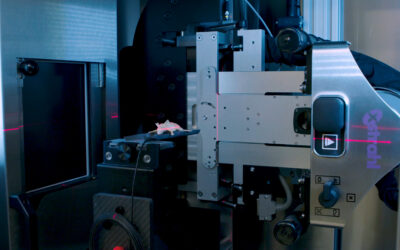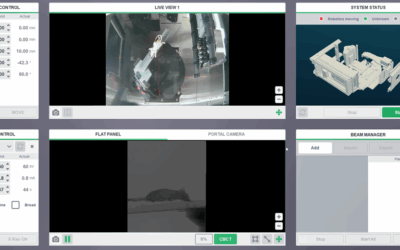Despite optimal radiation therapy (RT), chemotherapy and/or surgery, a majority of patients with locally advanced non-small cell lung cancer (NSCLC) fail treatment. To identify novel gene targets for improved tumor control, we performed whole genome RNAi screens to identify knockdowns that most reproducibly increase NSCLC cytotoxicity. These screens identified several proteasome subunits among top hits, including the topmost hit PSMA1, a component of the core 20 S proteasome. Radiation and proteasome inhibition showed synergistic effects. Proteasome inhibition resulted in an 80-90% decrease in homologous recombination (HR), a 50% decrease in expression of NF-κB-inducible HR genes BRCA1 and FANCD2, and a reduction of BRCA1, FANCD2 and RAD51 ionizing radiation-induced foci. IκBα RNAi knockdown rescued NSCLC radioresistance. Irradiation of mice with NCI-H460 xenografts after inducible PSMA1 shRNA knockdown markedly increased murine survival compared to either treatment alone. Proteasome inhibition is a promising strategy for NSCLC radiosensitization via inhibition of NF-κB-mediated expression of Fanconi Anemia/HR DNA repair genes.
Cron KR, Zhu K, Kushwaha DS, Hsieh G, Merzon D, Rameseder J, Chen CC, D’Andrea AD, Kozono D.
Download Paper
SPOTLIGHT: Behind the Beam: Tips, Tricks, and Translational Research from the Karolinska Institutet X-ray Irradiation Core Facility
Access the highly anticipated Xstrahl SPOTLIGHT Session, "Behind the Beam: Tips, Tricks, and Translational Research from the Karolinska Institutet X-ray Irradiation Core Facility," on demand now. This essential recording is a must-watch for radiation researchers and...







